It’s no secret that germs are spread through contact with an infected ill person, or by touching surfaces or equipment that isn’t kept clean and free from germs. As a result, in order to prevent further spread of infection, it’s a good idea to regularly deep clean your property to get rid of any nasty germs before they multiply and infect more people.
This exercise is even more important during the outbreak of viruses, such as flu and common colds – or even, more recently, coronavirus. Thus, in order to prevent the spread of infection from one person to another, you should ensure that germ hotspots are thoroughly cleaned and disinfected on a regular basis. Read this handy guide to help keep your property a germ-free zone.
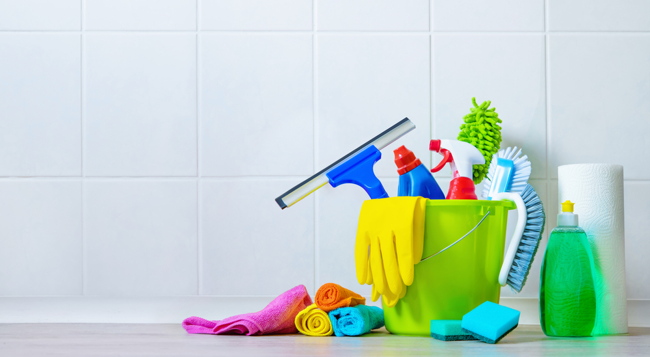
Remember: Clean first, disinfect later
Although both can help to prevent the spread of infection, as a general rule you should clean first and disinfect later. Cleaning is all about removing contaminants from a surface, and disinfecting is about killing germs.
First, clean the surfaces to remove any visible dirt by wiping them with soapy water (or a cleaning spray) and a hand towel. Next, apply a surface-appropriate disinfectant, such as disinfecting wipes or disinfectant spray – this helps to kill off any germs.
End of Tenancy London’s cleaning tip:
Don’t forget to give cleaning utensils (such as cloths) a clean too, otherwise you’ll end up spreading germs around to other surfaces. As a result, where possible, it’s a good idea to use disposable clothes and paper towels or use reusable clothes should be disinfected or washed immediately after use. The same goes for all mops and buckets, which should be cleaned and dried after each use.
Don’t forget to give cleaning utensils (such as cloths) a clean too, otherwise you’ll end up spreading germs around to other surfaces. As a result, where possible, it’s a good idea to use disposable clothes and paper towels or use reusable clothes should be disinfected or washed immediately after use. The same goes for all mops and buckets, which should be cleaned and dried after each use.
To clean and disinfect your home to prevent the spread of germs, you should use approved disinfectants, such as the following:
- Disinfecting wipes (Clorox, Lysol, or store brand will do)
- Disinfectant spray (Purell, Clorox, Lysol, all make sprays that will work)
- Isopropyl alcohol
- Hydrogen peroxide
However, if you’re struggling to find store-bought disinfectants or you can’t get out of the house, you may want to think about making your own natural cleaning products instead.
Cleaning tips to prevent the spread of germs in your home
– How to clean and disinfect frequently touched surfaces:
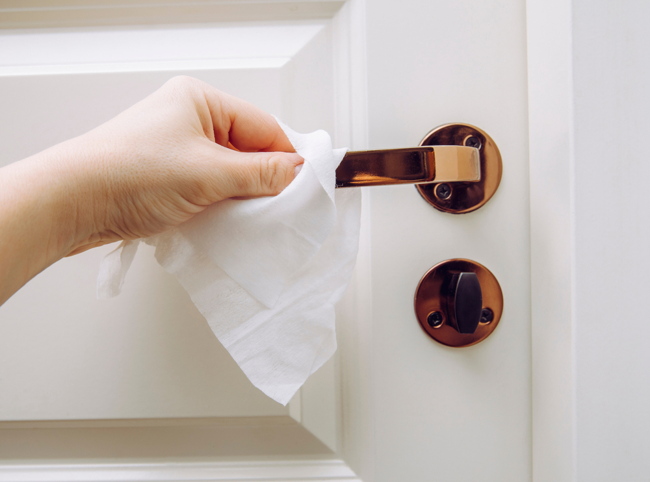
Researchers have found that the novel coronavirus is capable of living on surfaces such as cardboard for 24 hours, but up to two or three days on plastic and stainless steel. As a result, disinfecting high-touch surfaces is a good place to start.
Surfaces to clean and disinfect daily:
- Doorknobs and handrails
- Table surfaces
- Hard dining chairs (seat, back and arms)
- Kitchen counters
- Bathroom counters
- Toilets (seat and handle)
- Light switches
- TV remote controls
- Game controllers
To begin cleaning, you can use any household cleaning spray or wipe. It is important to follow the instructions on the cleaning detergent carefully, such as wearing gloves and making sure the room has enough ventilation whilst using the product.
After this, when disinfecting, ensure you use solutions that contain at least 70% alcohol or diluted household bleach solutions – but don’t use bleach with any other bleach solutions as this will be pointless and not make the surfaces any cleaner. It’s also a good idea to check the expiry date of your cleaning products before use, as this can compromise how effective they will be.
To prevent the spread of germs further, it’s a good idea to wear disposable gloves and throw them away as soon as you’ve finished with them. According to Gov.uk, this involves putting them into a disposable rubbish bag and tied securely, before being placed into a second bag and tied again. The waste should then be put aside for at least 72 hours before disposing of them with the rest of the household waste.
Don’t forget to clean your hands thoroughly using soap and water or an alcohol-based hand sanitiser after handling any waste.
– How to clean and disinfect a bathroom:
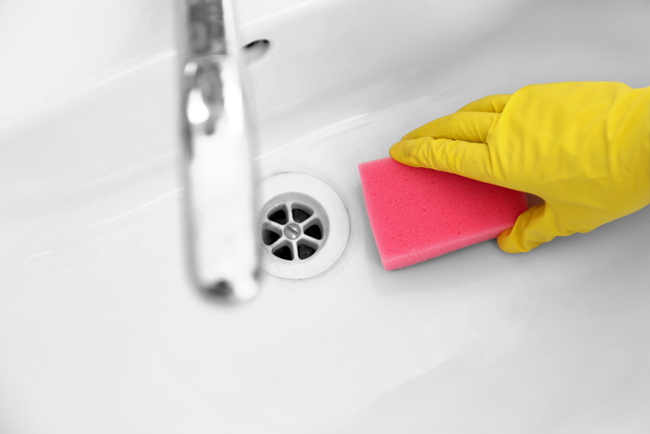
When it comes to cleaning any bathroom space, you must take extra care to ensure all germs are killed. To remove any germs as quickly as possible, use disinfectant on the following areas of the bathroom:
- Toilet seat
- Toilet handle
- Toilet rim
- Bath
- Sink and taps
- Shower tray
It’s also a good idea to keep tiles and grouting clean and washing shower curtains frequently – especially when used by someone who is unwell.
– How to clean and disinfect floors:
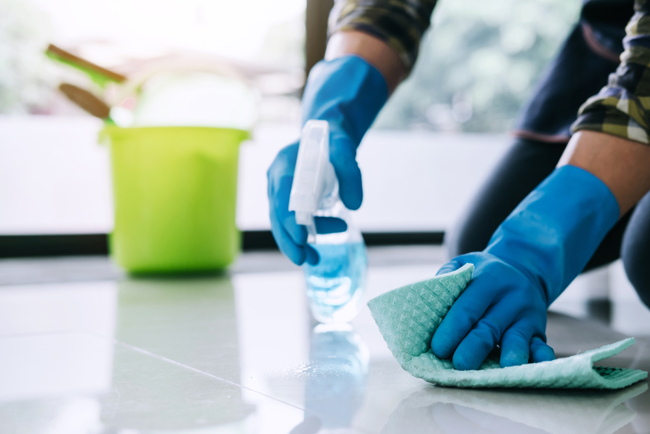
Any type of floor can be a breeding place for dirt and germs. Therefore, it’s a good idea to clean floors regularly with warm water and detergent to remove any visible dirt. However, if there is vomit, urine or faeces on the floor, clean it using a disposable cloth and warm water, and then disinfect the area thoroughly to remove any lingering germs.
On the other hand, if carpet or soft furnishings are involved, it can be laborious and time consuming. In order to remove all germs to prevent the spread of infection, steam cleaning is the best route. For more information, read our guide to carpet stains for the best ways to get your floor looking spotless, or contact us to get our professional team to clean your carpet.
You may also like: How to eliminate odours effectively
– How to clean and disinfect laundry:
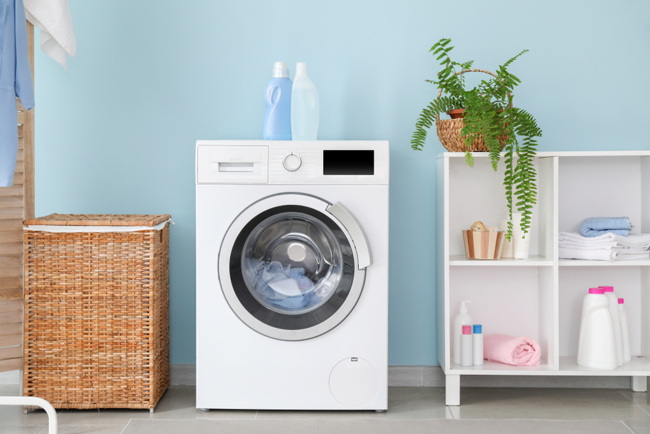
In order to remove all germs from your clothing, clean your laundry using the warmest water setting and disinfect any surfaces your laundry comes into contact with. What is equally as important is ensuring that they are completely dried afterwards, to ensure no germs fester and multiply. As always, ensure your hands are washed after handling to prevent the spread of germs.
What temperature kills bacteria in a washing machine?
All laundry – particularly underwear, bed linen and clothing – should be washed at 60C (140F), or at 40C (104F) with a bleach-based laundry detergent to kill any germs and prevent the spread of infection to others.
Feature image credit: FotoDuets / Shutterstock
